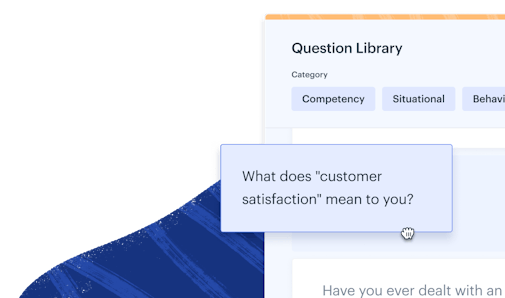How to Scale Customer Support Without Compromising Service


Just when you have your whole customer service process working beautifully, things inevitably change. What was a finely balanced system starts to wobble, and suddenly you’re in danger of drifting from consistently high quality into the crowded swamp of mediocre service.
In a growing company, change is unavoidable — and usually greatly desired — but that doesn’t make it easy to handle.
It is possible to scale your customer service function while maintaining high-quality support, but it takes deliberate effort and thoughtful actions. The first challenge is to understand what it means to scale support, and the second challenge is to realize when you need to scale (ideally before everything breaks).
We’ll help you meet both challenges below.
Learn more about how to quickly scale your customer support in this webinar featuring Veronica Armstrong of Lovepop, Katherine Pan of Kickstarter, and Mathew Patterson of Help Scout.
What does it mean to scale customer support?
Successfully scaling customer support begins with answering this question for yourself:
“How can we deliver significantly more customer service experiences at a consistently high level of quality given the resources we have available?”
In order to answer that question, you’ll need to know:
How many more experiences (roughly) will we need to deliver?
What do we mean by “high quality”?
What are the resources we have available (or that we could get)?
We’ll review scaling strategies later in this article, but first we must understand the many situations that may trigger a need to scale a service function.
Some triggers for scaling customer service are:
Adding new customers: Normal business growth can generate higher volumes of customer service interactions, even if nothing else changes.
Covering additional time zones: If your customers are geographically dispersed, or even if your product usage spreads outside your business hours, maintaining quality may demand support staff working additional hours.
Encouraging more conversations: Some business decisions may generate support demands, such as adding VIP support, offering help to “free” customers, or adding account management.
Offering new support channels: Adding live chat support or phone calls for certain customer types can change the workload, whether or not additional customers are added.
Supporting additional products or services: Especially in the SaaS world, product changes are linked to customer service changes. Customers who have not emailed in for months or years may suddenly need help, while at the same time the marketing team is bringing in brand new customers with the usual set of queries.
Whatever creates the demand for scaling customer service, you will need a way to know if your approach is working. That starts with knowing what a great customer service experience should look like.
Foundations of Great Service
Discover the tools and techniques used by high-performing customer service organizations in our free, six-part video course.
Sign up for free
Defining a quality standard
Measures like CSAT and NPS are handy tools for customer service teams to monitor customer perceptions, but ultimately they are not the same as measuring quality. That’s because what one customer considers excellent service could be the bare minimum to another person.
You will need to define a consistent, agreed upon, internal way to measure what your team considers to be top quality service. You may already have a customer service quality assurance metric, which is an excellent place to begin. If not, we’ve covered the process of creating one in this article.
When you are scaling service, your specific definition of good service may need to change. Metrics and goals that work for a four-person team may just not be feasible for a 10-person team. Similarly, the quality markers at 10 people will be different than those at 25.
Picking realistic new targets and building a new rubric that still reflects the underlying values of your team and your company is the challenge. To do that, start by reviewing what you know about your current and potential new customers: What do they most care about? What matters less to them?
There will necessarily be some educated guesswork in setting a new standard, but your goal is to figure out where you can afford to lower your internal standards without significantly affecting the customer experience. For example, there is no point pushing for a 10-minute response time if your customers would be just as happy with a 1-hour response time.
Change that time standard, and use the saved energy to focus where it matters most. Create a proposed new quality measure and discuss it with your team. Are the goals achievable? Do they match up with what you know about your current customers? How many people will you need in order to deliver on it?
With your agreed quality measure in hand (or a set of measures for each channel), you can begin to work on a system that will help your team meet that standard at scale.
4 ways to successfully scale customer service
You might be expecting 50% more customers in the next year, but it’s unlikely you’ll be given 50% more customer service staff to support them all. Fortunately, hiring additional staff is only one tool in the scaler’s toolkit.
The most effective approach will almost certainly be to combine several of these strategies, depending on your specific situation. You may also start with one or two and then deploy others later.
1. Improve customer service practices and processes
Make changes to help your existing team spend more of their time helping customers, while also creating a better working environment.
Improve your auto-replies: Small teams or low-volume support contexts may not need to use an auto-reply. As volume grows, though, that automatic response is a great tool for building confidence with customers (letting them know you are on the case), setting accurate expectations, and offering any self-help options.
Redesign your contact points: A clear, complete question can often be answered much more quickly than a vague one, and your contact pages can increase your chances of receiving them. A good support page can also point people to alternative ways to get help and reduce the overall volume. Read our guide to better contact page design for more.
Give your team more authority: When frontline staff know the right thing to do but are not allowed to do it, it frustrates them and delays the customer response. Giving clear guidelines and authority to take the necessary actions can reduce wasted time and create a better support experience for customers and for staff.
Simplify procedures: Pay attention to high-volume conversations that take up a disproportionate amount of time in your queue. Can you identify places where policies or procedures are using up time better spent helping the next customer?
Share best practices: Some of your team will be real queue crushers, often because they have optimized their support approach. Look for ways to share their skills and techniques to level up the whole team.
Have a good crisis plan: If your team is already close to capacity, anything that goes wrong can cause a cascade of delays. Being prepared with a clear plan for crisis situations will minimize their impact.
2. Invest in better tools
Having the right mix of software and technology assistance can make every support professional more productive and will make it easier to create consistently good service.
Implement a help desk: A good help desk will reduce errors, greatly improve speed of response, and allow for integration with existing sources of useful customer knowledge. You can try Help Scout for free with just a few minutes of setup.
Automate recurring tasks: Save time and create effortless consistency by implementing workflows to automatically handle common customer service tasks. We’ve got some automation suggestions to get you started.
Actively manage your queue: First in, first out is one way to prioritize support, but there are plenty of other approaches to handling a busy queue and getting the most out of your team’s efforts.
Investigate bots and other AI tools: For higher-volume teams, employing AI that could enhance your human staff might pay off. The tech for directly talking to customers isn’t quite there yet, but AI-powered suggestions or categorizing might be a winner for you.
Improve internal tools: How often is your team waiting for engineers to do work that could be automated with a simple lookup tool? Identify opportunities to empower support teams and deliver faster service.
Integrate customer data: Help your team understand your customers and give faster, more personalized support by including contextual customer data right where they need it.
Try the customer support platform your team and customers will love
Teams using Help Scout are set up in minutes, twice as productive, and save up to 80% in annual support costs. Start a free trial to see what it can do for you.
Try for free
3. Scale your self-service and knowledge base
The most scalable support of all is the support that customers can get on their own, without the need to even ask for help.
Expand your knowledge base: Building out a comprehensive, well-designed, and clear knowledge base takes effort upfront but pays off endlessly. Get started with our knowledge base 101 article, which also links to more in-depth help.
Make self-service knowledge more accessible: A knowledge base is only valuable if customers know it is there and can find what they need. A tool like our own Beacon, embedded on your site, can let you show the right help page to people just when they need it and save everyone a ton of time.
Grow a community: Do you have a place for your customers to talk about your product or service (or about the things they do with your service)? Consider helping customers help each other by supporting a community.
Improve your saved replies: Many questions are asked repeatedly, no matter how good your knowledge base is, and saved replies can help your team answer them more quickly. Making those replies clearer, more concise, and more accurate will scale up their impact enormously.
4. Build a larger customer service team
Sometimes you just need more people. An undersized team that can’t keep up will not give consistently good service, no matter how good the individuals on the team are. We’ve got plenty of advice on hiring for customer service.
If you are going to hire support folks, try to hire them in advance of growth. Give them time to get up to speed before the real rush so the results will be better for everyone. However, there are more ways to expand your customer service team than by directly hiring.
Try Whole Company Support: If everyone is capable of chipping in when needed, you can handle temporary volume spikes more easily and buy time for hiring full timers. Learn how we do it at Help Scout.
Consider outsourcing: Using a third party BPO to expand your customer service team (either seasonally or ongoing) can add enormous capacity at a much smaller cost. Read our guide to customer service outsourcing for more advice.
Move coverage around: Sometimes the problem is not about absolute capacity but about a mismatch between support capacity and support demand. Shifting willing people to different hours or onto weekend shifts can help you manage a queue more effectively.
Invest in training: If each team member could handle just a few more conversations in a day, that might be enough to create the scale you need, at least temporarily. Spend some time reviewing your customer service training and look for opportunities to strengthen your team.
Customer Service Interview Builder
Good interviews are at the heart of great hires. This tool makes it quick and easy to build a thoughtful interview process, from crafting job descriptions to asking the right questions.
Start building
Scaling with intent pays the growth rent
In his excellent book “What Got You Here Won’t Get You There,” Marshall Goldsmith points out that the particular approaches and habits that contribute to our initial success are often the same ones holding us back from further improvements.
Successfully scaling a customer support team might mean letting go of some behaviors and approaches that will just not work at a larger scale. The trick is to replace them with new approaches that achieve the same underlying features of a quality customer experience.
With a clear sense of team values and a well-defined measure of quality, a team can transition into new forms as the company grows, without losing the customer-centric focus so central to its success.
The Supportive Weekly: A newsletter for people who want to deliver exceptional customer service.
